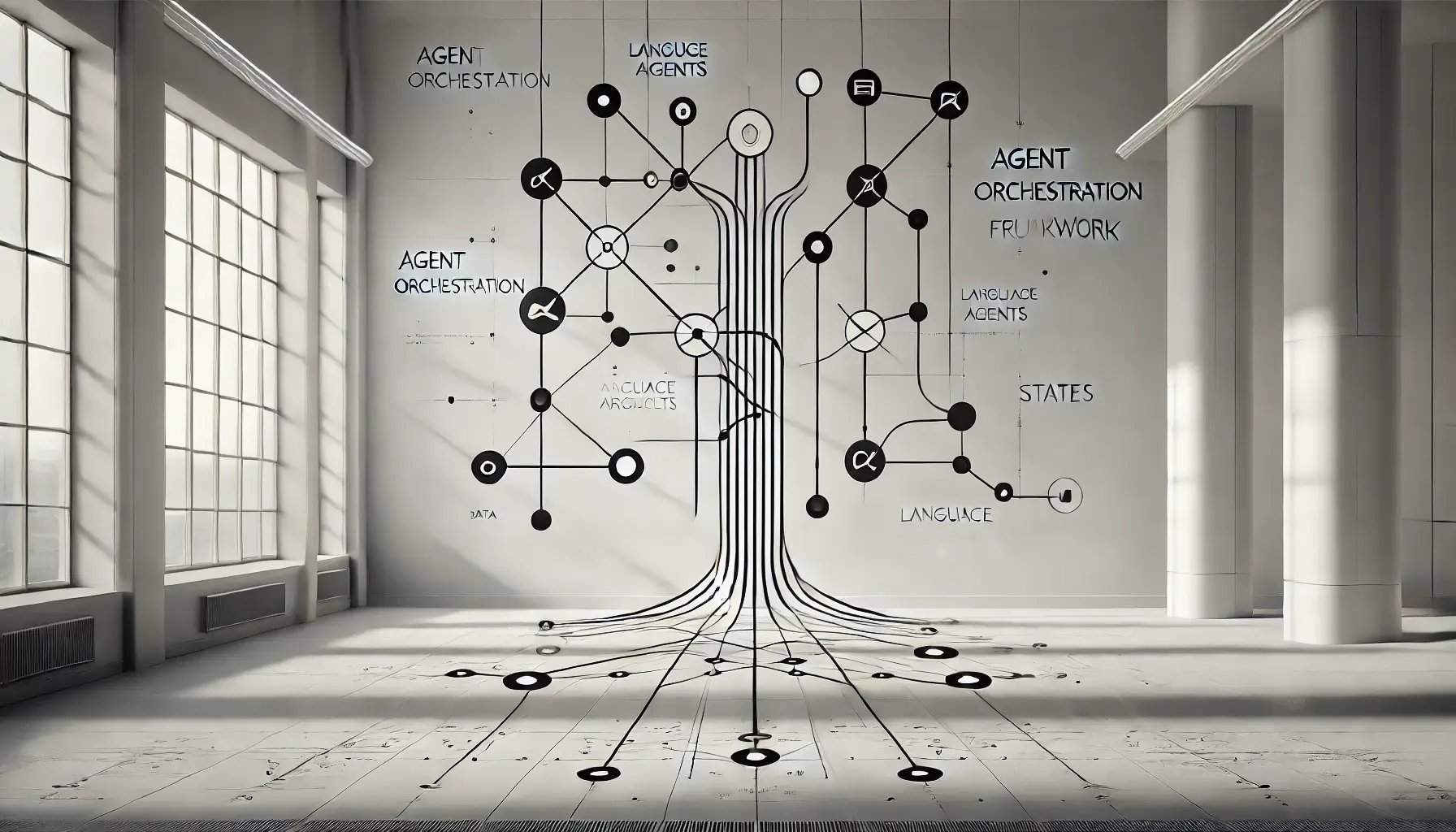
What is RAG? Mechanisms, Implementation Methods, and Success Stories
Updated: by Heysho

RAG (Retrieval-Augmented Generation) is an innovative technology that enhances the accuracy and reliability of generative AI.
It addresses the "hallucination" problem common in models like ChatGPT—such as the limitation of "I don't have information after 2020"—by enabling AI to reference external data for accurate responses.
This article explains everything from the basic concepts of RAG to its mechanisms, implementation methods, and differences from fine-tuning in clear, accessible language.
If you're looking to improve business efficiency through AI systems that utilize internal documents or automate customer inquiries, this guide is for you.
Table of Contents
- What is RAG? Basic Concepts for Improving AI Accuracy
- How Does RAG Work? Explanation of the Mechanism
- Differences Between RAG and Traditional AI Learning Methods: Which Should You Choose?
- How to Implement RAG: Introductory Approach for Beginners
- How to Choose and Use the "Knowledge Repository" Required for RAG
- Building RAG in Practice: Specific Steps and Points
- RAG Success Stories: Corporate Use and Achieved Effects
- Current Limitations and Future Potential of RAG: Challenges to Know
- Summary: Steps to Introduce RAG to Your Company
What is RAG? Mechanisms to Enhance AI Accuracy
RAG Basics: The Technology That Gives External Knowledge to AI
RAG (Retrieval-Augmented Generation) is a technology that combines a retrieval function and external knowledge (augmentation) with generative AI (LLM: Large Language Model) to produce more accurate and reliable responses.
Conventional generative AI like ChatGPT relies solely on its pre-trained knowledge, which is why it might struggle with questions like, "Which country won the 2022 World Cup?"
With RAG, AI can search for information from up-to-date databases or the web and accurately answer, "Argentina won the 2022 World Cup."
This significantly reduces the "hallucination" problem—where AI generates information that contradicts factual reality.
Why is RAG attracting attention now?
- Overcoming the limits of AI knowledge: Even the most advanced generative AI has limitations regarding information after its training cutoff date and specialized knowledge in specific domains. It simply cannot answer questions like, "What are the features of our new product?"
- Reducing incorrect answers: With RAG, AI can accurately reference internal documents such as "Our company's sales targets for fiscal year 2025," minimizing the risk of fabricated responses.
- Flexibility for easy implementation: Since there's no need to retrain the AI model itself—only to connect an external database—RAG meets the practical demand of "I want to use it starting today."
How RAG Works: AI that Acts Like a Library Librarian
RAG's Three Basic Steps
1. Find Information (Search)
When a user asks, "Tell me about our company's retirement benefit system," the system automatically searches for relevant information from the company's internal regulations.
This is like asking a librarian, "Where can I find information about retirement benefits?" in a library.
2. Gather Information (Add Knowledge)
The contents of the searched "Retirement Benefit Regulations, Articles 3-8" are passed to the AI with instructions to "Please answer based on this information."
This is similar to a librarian handing you the relevant book and saying, "The answer you're looking for is in here."
3. Create an Answer (Generate)
The AI generates a clear, understandable answer based on the search results, such as "Our company's retirement benefit system is determined by years of service..."
It's like reading a book and explaining its contents to a friend in your own words: "The retirement benefit system works like this."
Three Important Technologies That Support RAG
1. Technology to Convert Words into Numbers
This technology transforms text into numerical vectors (sequences of numbers).
For example, "cat" and "kitten" become similar vectors, distinct from "dog."
This mechanism allows computers to understand "similar meanings" by representing words numerically.
2. Special Repository That Can Search by Meaning
This specialized database stores converted vectors and quickly identifies "Which information is closest to this question?"
Examples include Pinecone, Chroma, and Weaviate—essentially "ultra-fast libraries that can search by semantic meaning."
Unlike traditional databases that search for "exact matches," vector databases can find "semantically similar information."
3. AI That Creates Answers
This refers to AI models like ChatGPT that comprehend search results and craft human-readable answers.
For instance, it can translate complex legal documents into plain language: "In simpler terms, this means..."
It functions like an expert who breaks down complex information into digestible explanations.
Comparison of RAG and Traditional AI Learning Methods: Which is Right for Your Company?
What is Traditional Learning (Fine-Tuning)?
Fine-tuning is a method of optimizing a large language model for specific domains or tasks by providing additional training data and adjusting the model's parameters.
It's like teaching a general knowledge instructor about your company's specific expertise.
RAG vs. Traditional Learning: What's the Difference?
| RAG | Fine-tuning | |
|---|---|---|
| Method | Dynamically utilizes external knowledge through search | Retrains the model itself |
| Development Costs | Relatively low | High (requires GPU resources and training time) |
| Flexibility | Easy to add new knowledge | Requires additional training |
| Hallucination Countermeasures | Readily supplements with reference information | Risk of incorrect learning within the model |
1. RAG's Advantages: Ease of Use and Update
Since RAG uses external knowledge dynamically without additional training, implementation costs remain relatively low.
For example, when a new product manual is created, you can simply add it to the database and use it immediately.
2. Fine-Tuning Advantages: Retention and Speed of Expertise
Since knowledge is embedded within the model itself, response speed may be faster in certain scenarios.
For example, a model trained on medical terminology can provide specialized answers without external searches.
3. How to Combine Both
Accuracy can be further enhanced by combining RAG with a fine-tuned model.
This is like having a subject matter expert answer questions while consulting reference materials.
How to Build a RAG System: Basic Mechanisms and Flow
Overall Flow: 5 Steps
- Data Preparation: Divide text into manageable chunks and convert them into numerical data (embedding).
- Database Storage: Store the embedded numerical data in a vector database.
- Information Retrieval: Convert user questions into numerical data and find documents with similar meanings.
- AI Instruction Creation: Format instructions appropriately to pass search results to the AI.
- Answer Generation: The AI creates the final response based on retrieved information.
Data Splitting Methods: How to Effectively Divide Information
Chunking breaks large text data into smaller, manageable blocks.
For instance, a lengthy product manual might be divided into sections of 500 to 1,000 tokens each.
The optimal splitting method depends on your purpose—paragraphs work well for question answering, while chapters are better for summarization tasks.
How to Choose a Tool to Convert Text to Numerical Data
- OpenAI Embeddings (e.g., text-embedding-ada-002)
- Sentence-BERT family models (available through Hugging Face)
- Select based on your specific use case, budget constraints, and accuracy requirements.
The Role and Selection of Specialized Databases
Vector databases store text as sequences of numbers (vectors), enabling semantic search capabilities.
Words with similar meanings (like "dog" and "cat") have similar vector representations, making them easier to relate.
When selecting a database, balance search speed, scalability for large datasets, and overall cost.
Mechanism for Finding Similar Information
Search primarily uses k-Nearest Neighbors (kNN) and Approximate Nearest Neighbor (ANN) algorithms.
These technologies efficiently find information semantically closest to the user's question.
It's comparable to quickly locating relevant books in the pet section when someone asks about dog care in a library.
How to Instruct the AI: Tips for Eliciting Accurate Answers
Effectively communicating retrieved information to the AI is crucial for generating accurate responses.
Clear instructions like "Please answer based on the following information" while highlighting search results significantly improves answer quality.
This approach resembles giving a student specific reference materials with clear instructions for writing a report.
Data Storage Technologies Required for RAG: How to Choose and Use a Vector Database
Comparison of Major Vector Databases: Which Should You Choose?
Pinecone: Cloud Service for Beginners
This ready-to-use cloud service offers a smooth entry point for newcomers.
With minimal setup required after registration, it's ideal for rapid prototyping and initial development.
Chroma: Open Source to Start for Free
As a free open-source solution, it enjoys active community support and ongoing development.
Perfect for personal projects, learning environments, or teams working with limited budgets.
Weaviate: Strong with Complex Data Structures
Offers detailed data structure definition capabilities and numerous extension functions.
Particularly valuable for projects involving complex data relationships and advanced querying needs.
Milvus: High-Performance Database for Large-Scale Data
Designed for high-speed searches across massive datasets, making it suitable for enterprise-level systems.
Ideal for applications like e-commerce platforms managing millions of product listings.
Qdrant: Optimal for Situations Requiring High-Speed Processing
A lightning-fast open-source database built with Rust, prioritizing performance.
Well-suited for real-time applications where response speed is critical to user experience.
Four Points to Consider When Choosing a Database
1. Future Scalability: Can it handle increasing data?
Evaluate how the database will perform as your data grows over time.
Even if you start with a few hundred documents, plan for potential growth to tens of thousands within a year.
2. Response Speed: Is it fast enough to not keep users waiting?
Assess whether search and response times meet your application's requirements.
For interactive applications like chatbots, sub-second response times are often necessary.
3. Ease of Management: Is the operational burden acceptable?
Consider the trade-offs between cloud services and self-hosting, including available support options.
Smaller technical teams may benefit from cloud services that reduce management overhead.
4. Cost Effectiveness: Is it worth the budget?
Evaluate pricing structures against your budget and calculate long-term operational costs.
Consider starting with open-source solutions and transitioning to paid services as your needs evolve.
Tips for Building and Long-Term Operation of Databases
For initial development and testing with small datasets, free options like Chroma provide an excellent starting point.
You can validate your RAG system's functionality using limited content, such as a 100-page internal manual.
When moving to production, consider services like Pinecone or Weaviate that offer robust stability and scalability.
For mission-critical applications like customer-facing chatbots requiring 24/7 availability, reliable cloud services typically offer the best balance of performance and peace of mind.
Practical Guide: Steps to Actually Build a RAG System
Required Knowledge and Tools: What to Prepare
Building a RAG system requires basic programming knowledge in languages like Python or JavaScript.
For instance, you'll use Python to connect with the OpenAI API or JavaScript to integrate RAG into web applications.
A fundamental understanding of cloud services is also beneficial for deployment.
Step-by-Step Implementation Method: Start Small and Grow Big
1. Create a Prototype: Test with a Small Dataset
Begin by testing your system with a limited dataset (such as a 10-20 page internal manual).
This approach is similar to testing a new recipe in small portions before cooking for a large group.
2. Data Expansion: Scale Gradually After Validation
Once your prototype proves successful, incrementally increase your data volume (for example, adding manuals from different departments).
Think of it as scaling up a recipe for your entire family after confirming it tastes good.
3. Practical Application: Deploy to End Users
After thorough testing, migrate your system to a production environment where actual users can access it.
For example, you might integrate it as an AI chatbot on your company's internal portal.
Data Preparation: Organize Information for Optimal Use
Dividing long documents into appropriate segments (chunking) is crucial for effective retrieval.
For instance, break down a 100-page manual into individual pages or paragraphs for better processing.
Adding metadata like "Department Name" and "Creation Date" significantly enhances search precision.
Collaboration with Existing Systems: Integration with Internal Tools
Use APIs to connect your RAG system with existing internal platforms.
For example, create a workflow where questions from an internal chat tool are routed to your RAG system with answers displayed seamlessly.
Remember to implement appropriate access controls to manage who can retrieve specific information.
Quality Check and Improvement: Refining Response Quality
Regularly monitor your system's response time and answer accuracy.
Establish benchmarks such as "Can the system correctly answer this question within 30 seconds?"
When issues arise, fine-tune your search methodology or AI prompts to enhance performance.
Reducing Operating Costs: Efficient Resource Management
Regularly review and prune outdated information to maintain relevance.
For example, remove manuals for discontinued products that no longer require support.
Optimize your AI prompts to minimize API calls and reduce operational expenses.
Real-World Examples and Implementation Effects of RAG
Internal Information Retrieval: Example of an In-House Chatbot
Many organizations now incorporate internal manuals and FAQs into RAG-powered systems.
For instance, when a new employee asks, "How do I apply for paid leave?", the system instantly provides accurate instructions from the HR manual.
This reduces the burden on HR departments while enabling employees to access information quickly and independently.
Improved Customer Support: Streamlining Inquiry Responses
Customer support becomes more efficient by integrating product documentation and past support cases into RAG systems.
When a customer reports, "My smartphone screen suddenly went black," the system can immediately suggest relevant troubleshooting steps.
Companies implementing this approach have reported an average 40% reduction in support response times.
Utilization of Specialized Knowledge: Applications in Medical, Legal, and Financial Fields
RAG is increasingly being adopted in specialized professional domains.
For example, when a physician asks about the latest treatments for specific symptoms, the system can present evidence-based information from recent medical literature.
Law firms are connecting RAG with case law databases, enabling rapid identification of relevant precedents when attorneys inquire about similar court cases.
Success Stories of Implementing Companies
1. Reduced Response Time: Examples of Faster Query Resolution
Many organizations now resolve inquiries in less than half the time previously required.
For instance, explaining product setup procedures that once took 30 minutes can now be completed in just 10 minutes with RAG assistance.
2. Increased Customer Satisfaction: Measurable Improvements in Service Quality
Accurate and prompt responses have significantly boosted customer satisfaction metrics.
One online retailer reported a 15% increase in positive reviews specifically mentioning "excellent support quality" after implementing their RAG system.
Current Challenges and Future Potential of RAG
Limitations of Current Technology
1. Data Management Burden: Scaling Challenges
As data volumes grow, management costs and operational complexity increase proportionally.
For example, scaling from 10,000 to 100,000 documents can multiply server costs several times over.
2. Explainability Issues: Understanding AI Reasoning
The internal reasoning process behind AI-generated answers often remains opaque.
When asked "Why did you recommend this product?", systems may struggle to provide detailed justifications for their recommendations.
3. Language Support Disparities: Challenges with Non-English Content
Many AI models are primarily developed for English, resulting in lower accuracy for other languages like Japanese.
Systems may have difficulty interpreting culturally specific expressions such as "Osewa ni natte orimasu" (Thank you for your continued support).
Research Trends for Improvement
1. Advanced Search Methodologies: Combining Keyword and Semantic Approaches
Hybrid search techniques that merge traditional keyword search with vector-based semantic search are gaining traction.
For example, when processing a query about "2023 tax reform" (令和5年の税制改正), systems can now consider both the specific year "2023" (令和5年) and the conceptual meaning of "tax reform" (税制改正).
2. Automatic Information Organization: Content-Based Classification
Technologies for automatically categorizing large document collections by semantic content continue to evolve.
Systems can now autonomously classify documents into categories like "product manuals," "troubleshooting guides," and "frequently asked questions."
Multimodal Capabilities: Beyond Text to Images and Audio
"Multimodal RAG" systems are emerging that can process and retrieve information from text, images, and audio sources.
For instance, when a user submits a product image with the question "What is this component called?", the system can identify the part and provide accurate information from relevant documentation.
Integration with Autonomous AI Agents: Toward Smarter Assistants
Research is advancing on combining RAG with autonomous AI agents capable of independent reasoning and action.
For example, when instructed to "Plan my business trip for next week," such systems could independently review company policies and suggest appropriate accommodations and transportation within budget constraints.
Future Outlook: Democratization of RAG Technology
RAG technology is evolving rapidly, with implementation barriers steadily decreasing.
Systems that once required expert knowledge and weeks of development can now be built in hours using specialized tools and frameworks.
Guide to Implementing RAG
Checkpoints When Considering Implementation
- Determine whether accurate answers are essential. For instance, RAG is ideal when you need to provide precise product specifications without errors.
- Assess if you need to handle frequently updated information. RAG excels when answering questions about internal policies that change monthly.
- Evaluate your AI training resources. RAG offers an accessible starting point if you lack the budget for dedicated GPU servers.
Step-by-Step Implementation
1. Start Small
Begin with a pilot implementation using a limited dataset.
For example, create a system with just "100 internal FAQs" to test functionality.
2. Gradually Expand Your Dataset
Once you've validated the approach, incrementally add more information.
Consider adding different categories of content such as "product manuals" or "company policies."
3. Scale to Full Deployment
Develop infrastructure capable of handling comprehensive data while implementing continuous monitoring.
For instance, manage tens of thousands of documents using cloud-based vector databases and regularly verify accuracy.
Required Team Composition
Successful RAG implementation requires team members with specific expertise.
Ideally, your team should include engineers familiar with Python or JavaScript for API integration, AI specialists who can select appropriate embedding models, and decision-makers who can evaluate ROI.
Keys to Success
Ongoing refinement is crucial for maximizing RAG's effectiveness.
Track instances where the system fails to provide correct answers, then systematically improve search accuracy and prompts to enhance the system's overall value.
Summary
RAG (Retrieval-Augmented Generation) enhances AI responses by supplementing the model's knowledge with external information sources.
It's comparable to "consulting reference materials during an exam rather than relying solely on memorization."
By connecting large language models (LLMs) like ChatGPT with organizational data, you can generate more accurate and relevant answers.
When asked "What are the features of our new product?", a RAG-enabled AI can reference the latest product catalog to provide precise information.
RAG offers advantages over fine-tuning approaches, requiring less specialized expertise and computational resources.
Perhaps most importantly, it significantly reduces hallucinations—instances where AI generates false information.
As the technology continues to mature, we can expect wider adoption across industries.
If you're considering RAG implementation, we recommend an incremental approach.
Start with a limited trial using a small dataset, such as 100 frequently asked questions.
After confirming effectiveness, gradually expand your data sources to build toward a comprehensive solution.
You can optimize performance by carefully selecting appropriate databases, refining your text embedding methodology, and crafting effective AI prompts.




